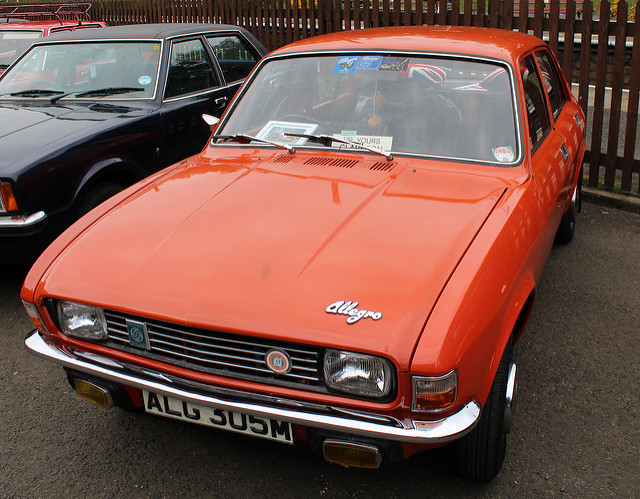HS2: On the Right Track?
Fifty years ago, the infamous Beeching Report was published by the government, aimed at dealing with the spiralling losses incurred by British Railways. On Dr. Beeching’s recommendations, over 2,000 stations and around 5,000 miles of line would close down, leaving many towns and regions without any public transport at all. And even after all that, BR still ran at a loss. At the time, coinciding with a huge motorway building programme, it seemed to represent an epochal shift from public to private transport; from rail to road – as inevitable, it appeared, as the shift from canals and stagecoaches to railways one hundred years earlier.
Fast forward five decades, though, and investment in railways is once again on the political and economic agenda. Passenger numbers have increased hugely since the 1990s, and are now at their highest level since the 1920s. Any closures suggested nowadays would be political suicide, for any government. And there is even broad consensus on building a new high speed line, HS2, to connect London and the North. A lot has changed since the Beeching era. Or has it?
To begin with, I was a strong supporter of HS2. In a context of ever deeper cuts and austerity, the HS2 project looked like one decision the government had got right. Aside from improving public transport, it’s an example of using infrastructure investment to prime the pump of the economy – the sort of thing which the Tories are, elsewhere, ideologically opposed to. There is a wide range of opposition to the scheme – not just from the usual nimby brigade, but more concerningly from groups such as Greenpeace and the Campaign for Better Transport. In these quarters, it’s not so much a question of whether rail investment is a good idea or not, but whether the £30bn about to be spent on HS2 could be used better elsewhere on the network. This is the source of my own doubts about the scheme.
For a start, I would argue that ticket prices, not the speed of the trains, is the main change ripped-off passengers would like to see in intercity travel. At its best, public transport can be a great equaliser – whereas HS2 will be of the greatest benefit to a minority of business travellers who can afford to pay for high speed. At 125mph on many parts of the west coast main line, train speeds into the capital are already pretty good. Capacity on existing lines into London could be improved to some extent by laying more passing loops to prevent slower freight trains delaying expresses, and by improving signalling to get more trains onto the line at a time. As far as London goes, the rail scheme Londoners really need isn’t another main line terminus – it’s Crossrail. And then there’s the small matter of the rest of the country. Away from the glitz of the main lines, local services in many areas are still appalling (not to mention overpriced). A Northern Rail train I was on recently reminded me of the BR of my childhood – draughty, grimy, late, and for all the private sector branding everywhere, giving the sincere impression that the operator just didn’t give a damn.
So what could we invest in instead? The association of train operating companies (ATOC) has proposed 14 lines, closed by Beeching, that should be re-opened as a priority. I’d add a few more to the list too. The former line connecting Penrith on the west coast main line with Keswick and Cockermouth in the traffic-clogged Lake District looks like an obvious candidate, as does the Carlisle to Edinburgh Waverley Route, the closure of which left much of the Scottish Borders isolated from the rail network. But reopening these lines doesn’t just benefit the localities in question, it also strengthens the network as a whole with increased versatility. Similarly, several main lines (such as the Western and Midland main lines) are still diesel operated. Electrification does more than improve train speeds and reduce carbon emissions – it also ‘cascades’ down newer diesel trains to replace clapped out rolling stock in non-electrified areas (the hateful, cheap-ass 1980s ‘Pacer’ units favoured by Northern Rail in my part of the country being particularly prime candidates for scrapping). And that’s even before we get to more general improvements such as better station facilities, longer trains on busy routes and more services extending into the evening.
Of course, HS2 won’t be without its benefits – I’d rather have that than nothing – but the money could be used to give a much more evenly spread beneficial impact on the network as a whole. The much vaunted reduction in flights probably wouldn’t happen either – it would have to extend to Scotland, not just Manchester, to achieve that.
As always, the elephant in the room is still the obscenely powerful road lobby (look how much fuss petrol duty causes, for example). It has more than anyone to lose from rail investment. But unlike road building, which only benefits those who can afford to use them, improving public transport benefits everyone, both by reducing carbon emissions from transport and increasing quality of life. Back in the Beeching era, the common complaint was that government shouldn’t subsidise BR, and that it must run at a profit – even though motorway building effectively subsidised haulage firms and car manufacturers. But it isn’t the idea of HS2 that frightens the road lobby. Trains are already the quickest and most convenient way for most people to travel into London. What actually terrifies them is the idea of a net improvement in public transport across the UK – an efficient, accessible, systematically invested in railway system.
British Rail image created by Steve Jones and used under creative commons.





